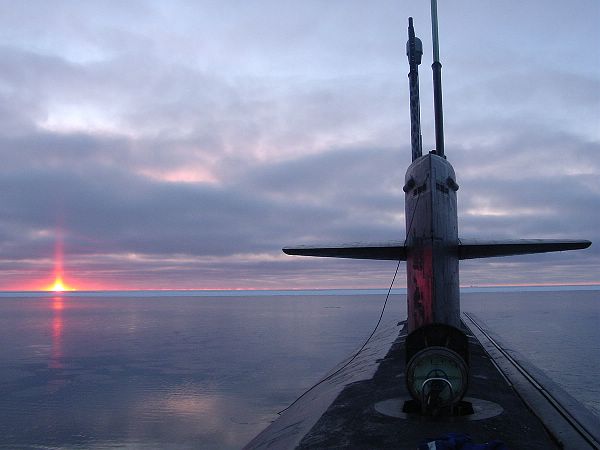
By 2030, the Arctic’s Northern Sea Route could be ice free and navigable for at least nine weeks each year, with a 10-week ‘shoulder season’, according to projections released today in the US Navy’s Arctic strategy. The Northwest Passage could be open for five weeks, with a six-week shoulder season; and the Bering Strait could be ice free for a whopping 27 weeks a year, with up to 10 weeks of shoulder season.
New shipping lanes are just one potential consequence of the ongoing loss of the Arctic’s blanket of snow and ice, which has accelerated in recent years. The Navy also projects that the region’s waterways will see rising activity from fishing, tourism and oil and gas exploration. But in its updated Arctic strategy, the service dismisses any suggestion that newfound access to Arctic resources will create a new Wild West.
Arctic sea lanes such as the Northern Sea Route and Northwest Passage “are not going to replace the Suez or Panama canals any time soon as primary shipping routes,” says Rear Admiral Bill McQuilkin, director of the US Navy’s strategy and policy division. Even in ice-free waters, ships may be hampered by drifting ice or incomplete nautical charts, creating an unacceptable level of risk for many industries.
Still, the region is likely to grow in strategic importance. The Navy’s report notes that the Arctic is home to an estimated 22% of the world’s undiscovered hydrocarbon reserves. With that in mind, the service says that it plans to improve its ability to operate in the Far North, though its new plan avoids specific discussion of the equipment and infrastructure that will require. “It’s not a rush to the Arctic,” McQuilkin says. “We’re making sure we’re pacing ourselves here — and we’re ready to go up there when required.”
 RSS Feed
RSS Feed Twitter
Twitter 6:53 PM
6:53 PM
 Unknown
Unknown
 Posted in
Posted in 


0 comments:
Post a Comment